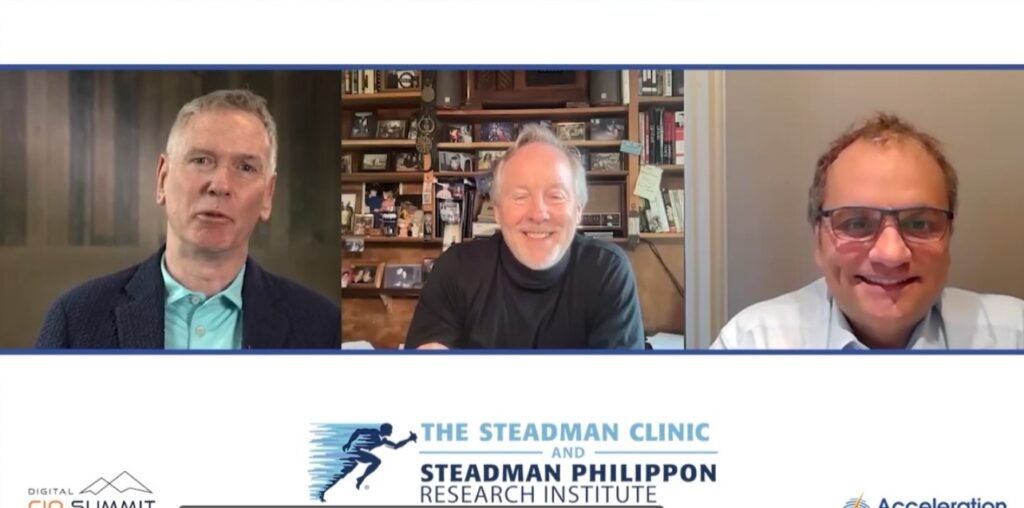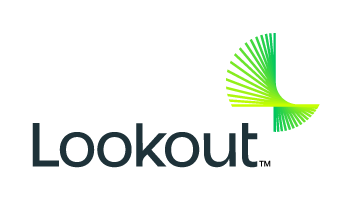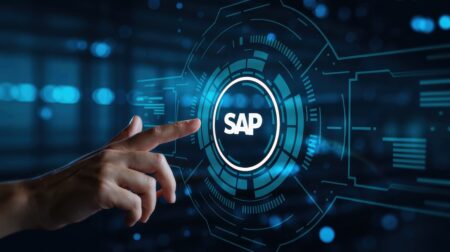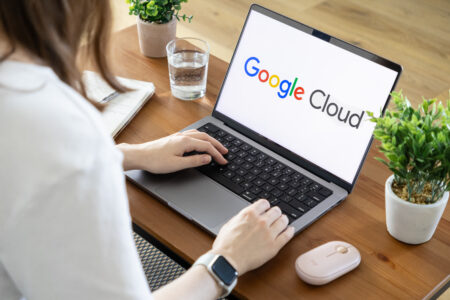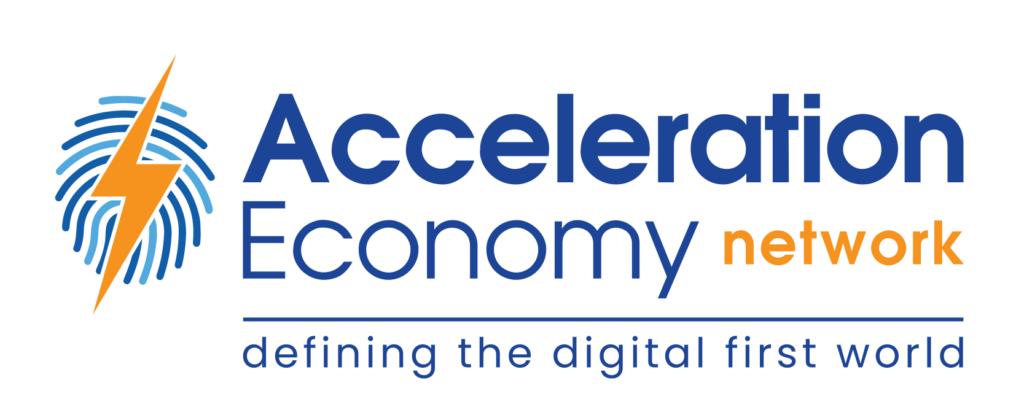
Cybersecurity from the Endpoint to the Cloud
The enablement of cybersecurity was the central theme of the first part of Day 3 of the Acceleration Economy Digital CIO Summit. John Siefert, Co-Founder of Acceleration Economy, led the discussion with Rob Wood, CISO, Acceleration Economy Practitioner Analyst, and co-host of the Cybersecurity Channel; Wayne Sadin, CDO/CIO/CTO, Acceleration Economy Practitioner Analyst, and host of the Data Modernization channel; Kenny Mullican, CIO of Paragon Films and Acceleration Economy Practitioner Analyst; and, Aaron Cockerill, Chief Strategy Officer for Lookout.
For Rob Wood, accessibility is foundational. “It’s important for those who are either customers or internal users. You want them to be able to access services, IT resources, data, the things that they need to do their job effectively and in a timely manner.”
Kenny Mullican added, “The complexity is growing exponentially. Because it used to be so simple. You were either inside your firewall or outside the firewall.
“But now that everything moves outside of the firewall… it could be anywhere. As a manufacturing company, we have IoT and manufacturing devices, and so many things that are all interconnected. When you’ve got these devices that are operating in real-time, you really don’t have time to do all your processing at some distant central cloud location, and you end up with a lot more Edge use.”
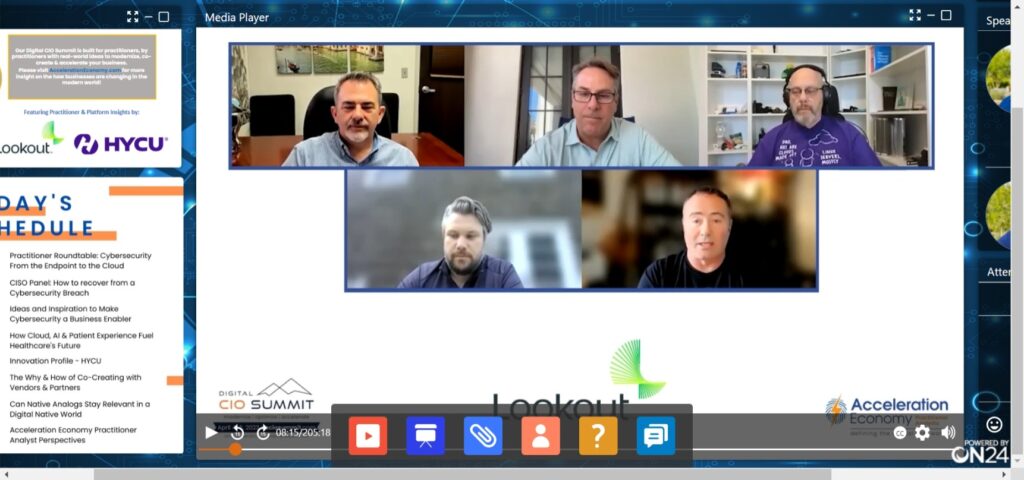
All the things shared by Rob and Kenny feed right into Lookout’s core focus areas. As Aaron Cockerill put it, “The company was originally focused on the security of mobile devices. We’ve expanded well beyond that now, but the approach we’ve always taken is to regard mobile devices as devices that are used equally to access sensitive corporate data in the same way that we used to think of laptops.”
Wayne then zeroed in on data access and how cybersecurity has been traditionally viewed. “The goal is not to be the department of ‘no’, it’s to be the department of ‘just enough.’ Then we can say we are providing the data in a form that is both secure and useful based on the security rules of the organization, the risk management policies of the board, and the needs of the data owners.”
CISO Panel: How to Recover from a Cybersecurity Breach
Continuing on the theme of security, Tony Uphoff, 4x CEO, Acceleration Economy Practitioner Analyst, and host of the Leadership Channel, was joined by CISOs and Acceleration Economy Practitioner Analyst, Rob Wood, Chris Hughes, and Frank Domizio as they dove into the impacts of a cybersecurity breach and what those next steps should be.
Frank put context around what “recovered” really means as a responder to cybersecurity breaches. “We are ‘recovered’ when the final report is written.”
But, he said, “During that time, we brought the business back online. We’ve done interviews. We’ve done retros. We’ve done a whole bunch of things, but until we’re able to talk about what happened from a position of knowledge, we haven’t recovered yet.”
For Rob, “It’s important that you break down the different definitions and terms in this whole spectrum.” Breaking down definitions and terms ensures that people aren’t communicating the wrong thing, causing undue panic and exacerbating the situation.

“It’s critical to have an instant response plan kind of codified,” Chris emphasize. “Doing things like tabletop exercises and other methods of kind of getting that ‘muscle memory’ of responding to an incident.” This is important as it will provide the immediate response actions and who you need to engage with inside the organization such as engineering teams, legal teams, regulatory groups, and others that may need to provide external communications.
Another area that surfaced in the discussion was regarding service level agreements (SLAs) between customers and service providers. Smaller companies may find it difficult to negotiate for better SLA response times when compared to larger companies.
Regarding the negotiation process, Rob put it this way, “You may not want to get into negotiation and hard work for every single provider. The juice is probably not worth the squeeze. But you as a program owner should have an executive understanding of what the risk makeup of your key provider tools are and the business processes that those support for the things that are truly Mission critical.”
Chris added, “It comes down to what you’ve done prior to the incident, and where you built that capability. You don’t want to learn how to fight in a fight.”
The group circled back to communication again. Frank shared that he “advocate[s] strongly for an incident coordinator. Somebody that can play that communications role between your leadership and staff, and they could talk to your marketing people for official comms — they’re that buffer so the technical folks can do technical things.”
Chris added something crucial involving people. “Try to avoid casting blame. It creates a situation where more stress is added and where someone ends up leaving the organization because they thought they were blamed.”
However, Chris continued by stating, “[This person] took the burden of the situation and they actually may be one of your best assets should another incident occur.”
Ideas and Inspiration to Make Cybersecurity a Business Enabler
The event continued as John Siefert, Co-Founder of Acceleration Economy, was joined by Deb Wolf, CMO of Lookout. Right away, Deb dove into the topic of hybrid work. She dug into the questions that many executives asked as we were coming out of the pandemic, “Are we putting people back in the office?” “Are they going back when they’re not in the office?” “What can they access?” “What can’t they access?” “How do we work the same way?”
As companies struggled to answer these questions, Deb pointed out that the topic of hybrid work often accompanies the topic of security. “They’re working from wherever, which means they’re working on whatever device they want, to work across whatever network, in whatever application they need to access.”

Deb continued, “And it needs to feel like they’re still inside the perimeter of that building [like] we had four walls around us. It still needs to feel and operate that way.”
However, the hybrid work mindset demands that we all can work wherever as long as we have the right access to the right data at the right time. Further, Deb pointed out that, in the past, most people thought that mobile or remote devices of high value or government people were the big targets.
“We’re seeing is this movement this sort of lateral movement through organizations that typically happen because an employee or a user uses the same passwords, or they get phished.”
The conversation then shifted to the blurring or blending of our personal and professional lives. Deb shared, “One minute, I’m texting a friend on my device. The next minute. I’m approving an expense report on SAP Concur.”
Protecting this work-life harmony that we all try to have is what Lookout is focused on. And as Deb put it, “We [Lookout] like to say, ‘Let businesses and people prosper.’”
Deb went on to say, “The crux of everything we have been talking about is this move in digital transformation. And digital transformation for me literally means that the business runs on data now, and in this digital world, requires that data be moved, accessed, and shared.”
Ending the conversation, Deb said, “Here we are now in an adapted world that just works, lives, and acts differently, and yet our CIOs and CISOs are still recovering from moving so much of that to the cloud so quickly. So, it’s really on us to help them rethink that.”
How Cloud, AI, and Patient Experience Fuel Healthcare’s Future
The next part of the event shifted to the cloud, artificial intelligence (AI), co-creation, and more as Bob Evans, Co-Founder of Acceleration Economy, spoke with Dan Drawbaugh, CEO of The Steadman Clinic, and Paul Swider, CEO & Chief Philanthropy Officer of RealActivity, and Acceleration Economy Practitioner Analyst.
Right away, Dan and Paul dove into robotics within the healthcare industry. However, for Dan, this was personal as he shared, “It’s a fast-growing field, and I can speak for myself. I’m three weeks post robotic surgery with a robotic technology called DaVinci, and my outcome at three weeks would have taken three months just five or ten years ago.”
Paul excitedly jumped in with a great question posed to Dan. “One of the challenges, I think, with robotic surgery is they tend to be complex and costly because they are sophisticated. Are you starting to see any low-hanging fruit in the industry where people can get in with a lower barrier to entry?”

Dan replied, “I think that obviously, medical school students are exposed to robotics now much earlier in the educational process. Further, the Steadman Clinic has a fellowship program that is ACGME certified, and those individuals are exposed to robotics [powered by AI] early on.”
The conversation shifted to the topic of AI within healthcare and, more specifically, the impact of ChatGPT within clinical research. Dan shared an example of a brilliant individual in their outcomes-based research. They conducted a test where they gave a topic to an international fellow and were tasked with writing an abstract. Then they provided the same parameters to ChatGPT. The outcome was that when the abstract was put in front of the MD scientist, they only had a 51% confidence level of which one was written by a person versus AI.
Dan further expanded on the AI topic by diving into predictive analytics. They can do imaging segmentation based on 4,000 rotator cuff operations, as an example, and review the tissue quality of the patients. The analysis provides to the team helps them determine the treatment they will recommend for the best recovery.
“What’s interesting Paul like, just reflecting back on what we’re talking about, if we did this interview two years ago, I would have said that regenerative medicine, and trying to delay aging [was the future]. Now, I would say, two years later, that I believe with the science and research going on, instead of delaying aging, there will be methodologies to begin to reverse aging.”
In closing the discussion, Bob posed a question to Dan, as he had made the unique transition from CIO to CEO, of what traits to embrace. “The most important thing,” Dan said. “Is recognizing that you’ve developed skills that are unique for any organization and then be willing to take the jump or having enough confidence in yourself that you can achieve that goal.”
The Why & How of Co-Creating with Vendors and Partners
The next segment built on the theme of innovation by digging into co-creation with Venkat Ramaswamy, Professor at the Ross School of Business, and Bob Evans, Co-Founder of Acceleration Economy.
Venkat dove in by clarifying his definition of co-creation, “Co-creation is essentially innovating around experiences.” This then led to a great real-world example from Venkat where he thought he would use ChatGPT to help co-create helpful topics.
“I was trying to prepare for this interaction today, [using ChatGPT, I would say] ‘Hey, tell me the things I need to do to prepare for my call with Bob.’ But if you put that into ChatGPT that’s not going to be very useful because it doesn’t have the context and content of all the interactions we’ve had previously.”

For Venkat, the output that was generated was based on his own context and how he framed the input. Further, this needs to bring in the corporate context, the ‘Court of Ethics’ values, compliance, security, and privacy. It needs to consider all those things before it generates the output.
“So, it’s really a process of what I like to call interactional creation,” Venkat described.
This creative process then expands outward to something Venkat refers to as a “living enterprise.” He framed it this way, “It is kind of like the platform is coming alive in the context of a particular person, like a mini-ecosystem.”
“It’s kind of giving a sneak peek at the enterprise of the future. Which is essentially highly dynamic, highly agile, and in the moment of every single engagement interaction, and then pulls together a mini ecosystem of services, people, processes, and technology that’s relevant.”
However, Venkat did not avoid the glaring realities that exist. “So, I think one of the biggest challenges is that the more you co-create, the more risks you have to manage. Period. Because, by definition, all those things that we control are out in the open and there are more new types of risks.”
Can Native Analogs Stay Relevant in a Digital Native World?
To cap off the entire Digital CIO Summit, Bob Evans was joined by Christopher Lochhead, Category Pirate, Godfather of Category Design, and Top 0.5% Author & Podcaster.
Right away, Christopher jumped into the topic at hand. “if you think about Native Digitals and you just watch their behavior. What you begin to realize is their primary life experiences digital-first, and their secondary life experience is analog.”
“For Native Analogs, the ‘IRL’ (in real life) is our primary life experience, and the digital world is an add-on to that. So, when you realize that if you’re Native Analog, you’re the last Native Analog to ever exist. And if you’re Native Digital, you’re the first in a whole new category of human who is growing up digital-first.”
But then, Christopher got to the real kicker. “There are more Native Digitals in the United States of America than there are Native Analogs today. And if you work in business today, and in knowledge work, what we’ve historically called white collar work, you are more than likely to be working for a Native Digital, particularly a millennial, than you are to be working for a Native Analog today.”
However, these two categories of humans don’t have to work in conflict. There is a unique opportunity presented that Christopher hit on. “If you are a Native Analog, you need to be mentored by Native Digitals about these new models and these new approaches and these new technologies. And at the same time, you get to mentor these up-and-coming Native Digitals who want the value of your wisdom.”
Next, Christopher and Bob dove into the topic of AI and its impact on both Native Analogs and Native Digitals. “if you look at the explosion we’ve had in consumer-oriented AI, thanks primarily to ChatGPT,” Christopher said. “What do we have happening? We have major educational institutions in our country and major cities ‘banning’ ChatGPT.”
“Well, the last time I checked, the purpose of education was to prepare our young people to be successful in the world. When we cancel ChatGPT in schools we’re cutting children off from the future — and it’s so ridiculous. The Luddites are always wrong and the way I look at it is. Should we take away children’s smartphones? Laptops? How about internet access?”
This backward thinking and actions are the opposite of what new job skills are now needed, according to Christopher. “The number one new job skill for white collar knowledge workers is going to be, how effectively you can write AI prompts.”
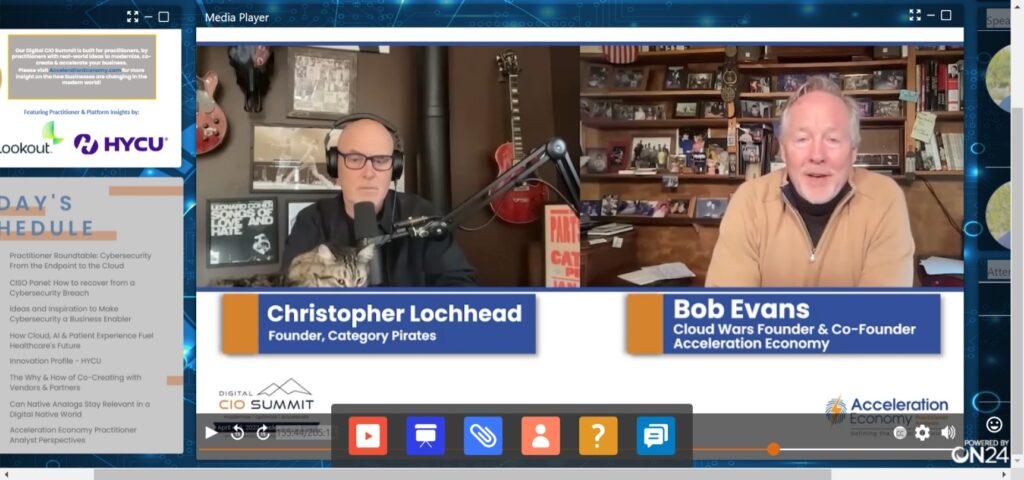
Further, this brings many companies to a critical question, “How do they reach Native Digitals?”
“The challenge people have from a sales and marketing perspective is that they sure don’t watch television. Asking them to watch TV would be like asking them to get on a horse to ride across the country instead of a plane.”
“So, understanding the digital communities they’re [Digital Natives] a part of, understanding how to drive what is called digital ‘Word of Mouth’ in new and exciting ways, and how to be in the places where they live work and play digitally first.”
“Those are all things that most Chief Marketing Officers of S&P 500 companies don’t even know how to have the conversation about.”
Winding down the discussion, Christopher posed pretty blunt realities for existing knowledge workers. “The people who are going to be the most successful, the people that are gonna make the biggest difference and the most amount of money, are the people who create net new knowledge, net new intellectual capital, creative capital. And from a mindset perspective think, ‘I am a creator not just a knowledge applier. I am a knowledge intellectual, a capital intellectual property.”
To see more content from Acceleration Economy’s Digital CIO Summit, including all recorded sessions from the three-day event, register here for your on-demand pass. You will hear from CIO practitioners about data modernization, AI, hyperautomation, cybersecurity, and growth strategies.


